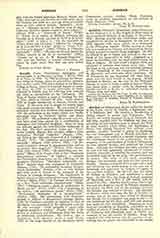

Ansaloni, GIORDANO (sometimes called GIORDANO DI SAN STEFANO), b. at San Angelo in Sicily early in the seventeenth century; d. in Japan, November 17, 1634. Having entered the Dominican Order and completed his studies at Salamanca, he was sent in 1625, together with many others, as a missionary to the Philippine Islands. Whilst serving as chaplain in a hospital for Chinese and Japanese at Manila he had occasion to master these languages. In 1631 he offered to go to Japan and arrived at the outbreak of the persecution in 1632. Disguised as a bonze he travelled over the land administering the rites of religion. He was seized August 4, 1634, and subjected to tortures that lasted seven days. Not the least of his sufferings was his enforced presence at the beheading of his companion, Thomas of St. Hyacinth, and sixty-nine other Christians. On November 18 he was suspended till dead from a plank with his head buried in the ground. Whilst detained in Mexico, on his way to the Philippine Islands, he wrote in Latin a series of lives of Dominican saints after a similar work by Hernando del Castillo and left at Manila an unfinished treatise on Chinese sects and idols.
THOS. M. SCHWERTNER

